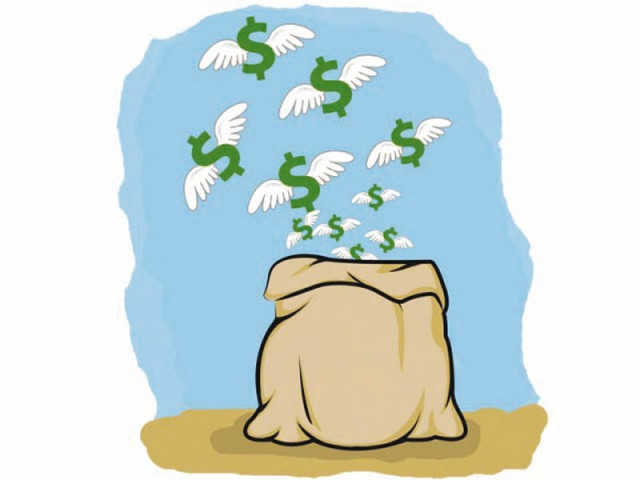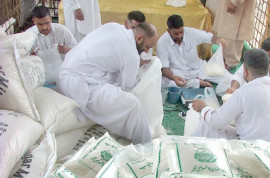
Foreign exchange reserves held by the State Bank of Pakistan (SBP) have declined to a 12-year low of $2.9 billion, hitting its lowest level since November 2001, according to data released yesterday.
SBP’s foreign exchange reserves reduced $83.5 million, or 2.7%, between November 29 and December 6. Total liquid foreign reserves held by Pakistan on December 6 amounted a little over $8 billion, SBP data revealed. Out of the total liquid reserves, net foreign reserves held by the banks other than the SBP amounted more than $5 billion.
Pakistan’s foreign exchange reserves have declined by $2.9 billion since the beginning of fiscal year 2013-14. Notably, the decrease in the total liquid reserves is mainly due to a sharp drop in the reserves held by the central bank.
Speaking to The Express Tribune, Topline Securities research analyst Zeeshan Afzal said the IMF loan repayment amounting to $1.9 billion has caused the sharp decline in reserves since the beginning of the fiscal year, although Pakistan has received the first tranche of the IMF loan, Coalition Support Fund (CSF) and other inflows since then.
“There were no scheduled payments from or to the IMF between November 29 and December 6. Apparently, the decline in reserves is because of the current account deficit, specifically balance of trade,” Afzal added.
Pakistan’s current account deficit increased to $1.3 billion in July-October as opposed to the surplus of $14 million in the corresponding period of the last fiscal year.
As a consequence, the rupee has undergone considerable depreciation due to declining reserves. It has depreciated by 7% since July 1 and was traded at Rs110.50 a dollar in the inter-bank market on September 26.
However, the rupee is stabilising in the inter-bank market of late despite dwindling reserves. The rupee hovered around Rs108 a dollar with a marginal change in value during the week under consideration.
Afzal attributes the recent stability in the value of the rupee to the government’s effort to reach out to commercial banks and the emerging clarity over foreign exchange inflows. In addition, Afzal said, a decline in demand from importers due to their expectation about the strengthening local currency also played a key role.
The finance minister recently met senior bankers and shared his optimism about the expected foreign exchange inflows from the 3G auction, loans, bonds, privatisation and CSF.
Meanwhile, according to economist Sayem Ali, the current level of foreign exchange reserves gives only three weeks of import cover. It reflects a highly vulnerable balance of payment position with a negative outlook for the Pakistan rupee.
“Foreign reserves data shows the SBP’s short-term borrowing from commercial banks has spiked, which increases the roll-over risks in the foreign exchange market,” Ali said.
“According to the SBP data, net borrowing from banks through the swaps/forwards market increased to $2.9 billion in October as opposed to $1.8 billion in September (a month-on-month increase of 61.1%), which reflects tighter dollar liquidity and a rising cost of borrowing for importers,” he added.
In the current fiscal year, the IMF will lend Pakistan $2.2 billion whereas Pakistan will repay it $3.2 billion.
“Private capital inflows have posted a healthy increase on the booming stock market, but they remain insignificant to have a meaningful impact on the foreign exchange reserves position,” Ali added.
Published in The Express Tribune, December 13th, 2013.
Like Business on Facebook, follow @TribuneBiz on Twitter to stay informed and join in the conversation.

















COMMENTS
Comments are moderated and generally will be posted if they are on-topic and not abusive.
For more information, please see our Comments FAQ